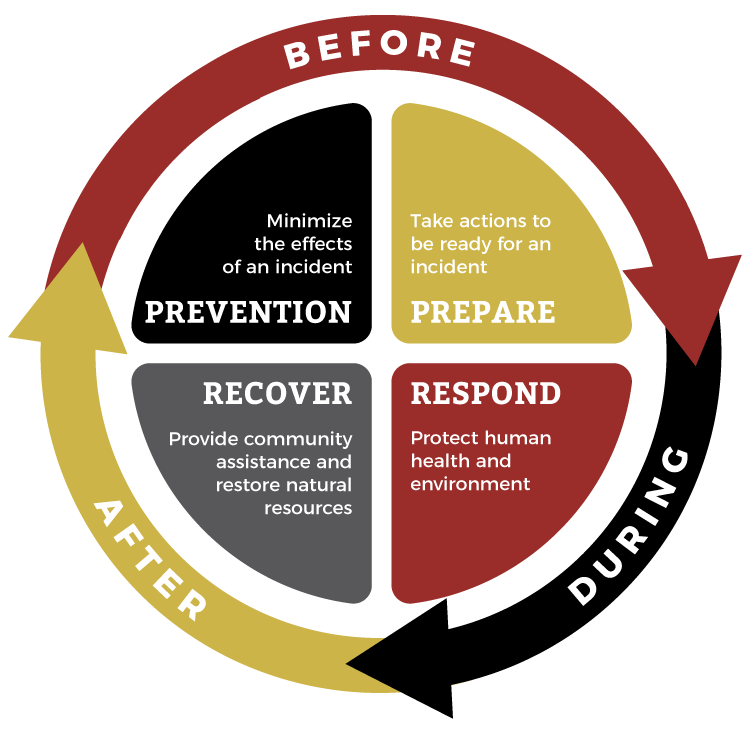This page is currently under development. If you have any resources to assist with the development of this page, please contact us at TLAC@nau.edu or use the TLAC Contact Form.

Recovery Planning
Planning for recovery ahead of spills/releases ensures that Tribal communities can:
-
- act quickly to identify appropriate recovery leadership and their roles and responsibilities,
- restore the health and well-being of individuals and households impacted by the spill/release,
- restore natural resource injuries to their original condition,
- compensate the community for lost use of resources as well as the time it takes the resources to recover,
- meet the needs of affected Tribal organizations, businesses, and institutions,
- position themselves to meet future needs, and
- increase their resilience in the face of future spills/releases.
FEMA’s Pre-Disaster Recovery Planning Guide for Tribal Governments provides a basic framework and guidance for Tribal leadership and stakeholders as they plan for recovery from a disaster and is a useful guide for planning for recovery from a spill/release.
EPA’s Local Governments Reimbursement Program
In the event of a release (or threatened release) of hazardous substances, EPA may reimburse local governments for expenses related to the release and associated emergency response measures. The Local Governments Reimbursement (LGR) Program provides a “safety net” of up to $25,000 per incident to local governments that do not have funds available to pay for response actions. See EPA’s Local Governments Reimbursement Program webpage for details and eligibility requirements.
Natural Resource Damage Assessment
Natural Resource Damage Assessment (NRDA) is the legal process that federal agencies like EPA and NOAA — together with states and Indian tribes — use to evaluate the impacts of oil spills, hazardous waste sites, and ship groundings on public natural resources along the nation’s coasts and throughout its interior.
Watch the video, Introduction to Natural Resource Damage Assessment and Restoration (NRDAR), to learn more.
The text above have been provided as a starting point for the development of this webpage. Please consider submitting additional information, examples, and Tribal case studies to TLAC@nau.edu or use the TLAC Contact Form to share here.
